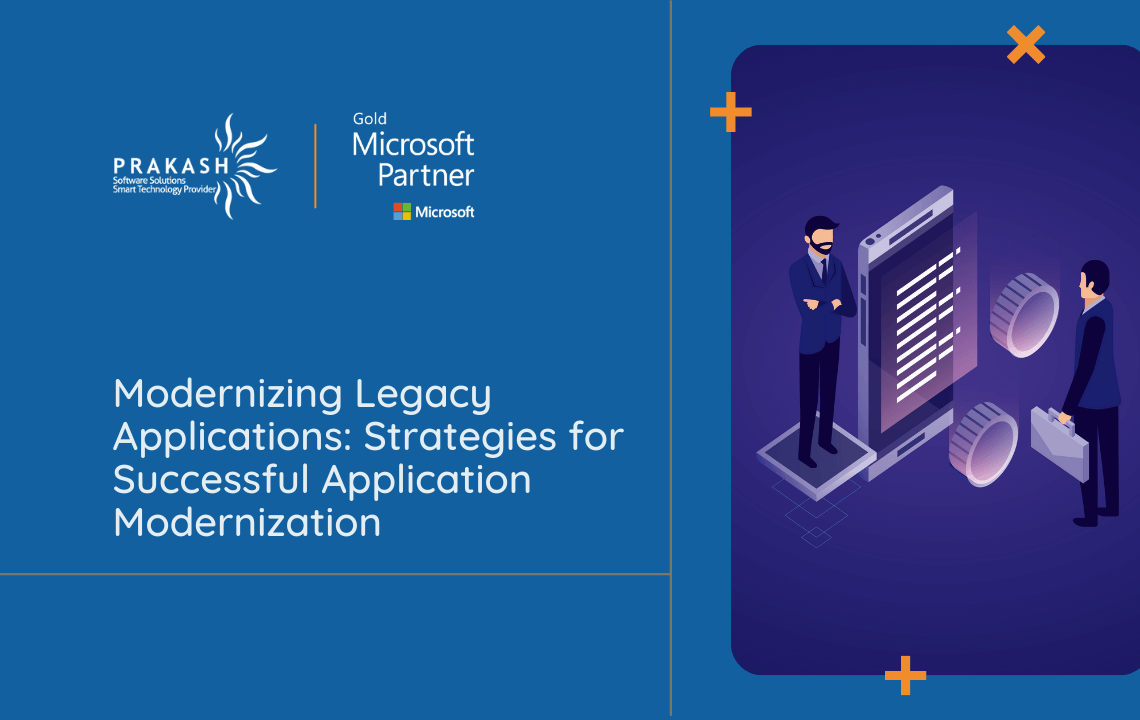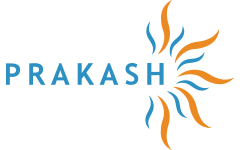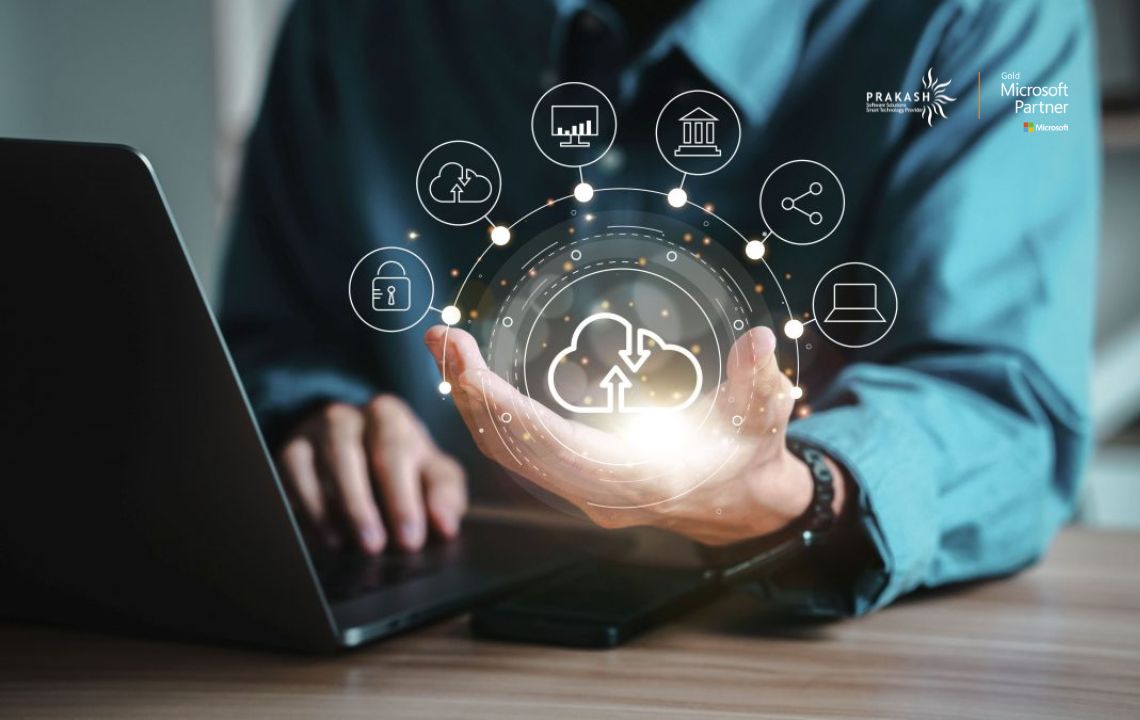
Legacy Application Modernization: Successful Strategies
Time is pivotal in maintaining competitiveness. For numerous organizations, upgrading systems entails dedicating time, financial resources, and manpower. Uncover essential tips on how to modernize legacy applications while navigating these crucial considerations.
Modernizing legacy applications offers the opportunity to restructure, reconstruct, or substitute outdated systems that no longer align with current business objectives.
However, without a solid understanding of the process, application modernization can impede your progress in the digital transformation journey.
It is noteworthy that more than 75% of projects focusing on modernizing legacy systems end in failure. To steer clear of this outcome, this guide provides insights on application modernization strategy for successful legacy application modernization initiative.
As time progresses, the efficiency of legacy applications tends to diminish. Issues such as bugs, errors, and critical flaws emerge, rendering these applications obsolete and inadequate for meeting evolving business requirements.
Legacy application modernization, when executed effectively, not only addresses these challenges but also has the potential to attract and retain customers, foster business expansion, and uphold competitiveness in the market.
Understanding Legacy Application Modernization
To discuss Legacy Application Modernization, it is necessary to first discuss what constitutes a legacy system and how to identify one.
Outdated software or technology, termed legacy systems, can impede business growth by struggling to adapt to changing market demands.
Despite appearing antiquated, these systems often remain vital to daily operations, operating satisfactorily. These businesses leverage top-notch application modernization tools to maintain the functionality of their legacy software.
Legacy application modernization systems involves revitalizing an aged system by incorporating contemporary features, updating its platform infrastructure, and refining its overall architecture.
This transformative undertaking not only tackles the constraints posed by outdated systems but also ensures compliance with prevailing industry standards, security protocols, and evolving business prerequisites.
The act of updating legacy systems enables organizations to elevate operational efficiency, scalability, and overall performance, positioning themselves for sustained success in the ever-evolving digital landscape.
Determining the Appropriate Timing for Legacy Application Modernization
- Determining the opportune moment for upgrading legacy applications is a nuanced undertaking, necessitating careful deliberation instead of hastily embracing the modernization trend. The shift from an antiquated system to a contemporary one, harmoniously integrated with advanced technology, necessitates careful and thorough planning. Organizations can maximize the benefits of the process by following a systematic, incremental approach to modernizing legacy applications.
- To address the “when” question, certain indicators suggest that it might be the right moment for legacy application modernization in your business. It’s time to consider modernization when:
- Your legacy system struggles to adapt to evolving company needs, impeding business growth due to scalability limitations.
- The speed of your legacy system decreases due to extensively patched architecture and reliance on hard-coded passwords.
- Technical debt associated with your legacy system increases, posing obstacles to business scalability and growth.
- Your legacy system becomes susceptible to security risks stemming from outdated hardware or software with no maintenance support.
If any of these signs manifest in your legacy technology, it’s prudent to contemplate business application modernization. Although legacy systems provide a sense of familiarity, transitioning to a modern system may initially seem unsettling.
However, when your legacy technology exhibits the risk signs, it is the opportune moment to explore legacy application modernization services.
Now, understanding what to anticipate from the modernization of legacy systems is crucial for businesses before embracing any digital transformation strategy.
Examine the anticipated outcomes of the modernization process in contrast to the potential constraints of legacy systems to make informed decisions.
How to Modernize Legacy Applications? [The 7 R’s of Legacy Application Modernization Process]

Legacy modernization is an intricate business process, and each of the seven approaches comes with its own set of challenges and rewards. The key is to select the right option that can optimize your systems in terms of speed and cost-effectiveness.
Here is a compilation of the 7 R’s modernization techniques or approaches.
Rebuild: Rebuilding legacy systems is perhaps the most expensive and time-consuming method, yet it yields optimal results. The rebuild approach transforms legacy processes into fully integrated cloud-native environments.
This method involves extensive DevOps practices, utilizing technologies such as APIs, microservices, and containers.
Rehost: In the rehosting methodology, legacy systems are deployed in a new environment without altering their code or functionalities. Organizations can retain their investments in legacy processes while benefiting from cloud infrastructure by adopting the ‘lift and shift’ approach.
However, not all cloud-native tools can be leveraged to their full potential through this modernization approach.
Refactor: Refactoring is commonly employed in hybrid environments, where parts of legacy systems are code-optimized to enhance performance. This process usually involves keeping the frontend or functionalities unchanged while modifying backend components.
Organizations often opt for refactoring because it is less disruptive than a complete rewrite, allowing time for the assessment of each app component and selection of the best-fit platform.
Replace: This approach entails replacing the existing system entirely with a new one to optimize business processes. The challenge lies in determining how to integrate existing data into the new system to prevent disruptions.
Retain: In rare scenarios, an enterprise may choose to make no changes to its environment and let its solutions function as is. The decision to retain a legacy system is critical for IT leaders, requiring a long-term strategy to ensure the smooth functioning of all app components.
Replatform: Replatforming involves moving an existing legacy system to an entirely different platform while maintaining the same app features. This approach allows for improved performance with minimal changes to the coding, providing advantages in terms of enhanced performance and minimal infrastructural costs.
Retire: This involves completely discarding the existing system and migrating users to an alternate system that is already operational. Retiring legacy systems often necessitates a complete redesign of processes to bridge operational gaps.
Note: What works for one organization may not have the same effect on another. Therefore, it is crucial to evaluate specific business needs against the benefits offered by each legacy application modernization approach.
Understanding the Unseen Expenses of Legacy Systems
Organizations might still rely on legacy systems, characterized by outdated hardware or software programs. Despite the apparent utility of these technologies, they entail unforeseen costs that can negatively impact the productivity and profitability of an organization.
The following outlines some concealed expenditures associated with legacy systems:
Concealed Costs Linked to Legacy Application Modernization

- Maintenance Costs: Systems and applications accumulate complexity over time, making them challenging to manage. Each alteration introduces a layer of intricacy, leading to glitches. Even simple updates can swiftly transform into time and resource-consuming tasks.
- Support Costs: As systems age, vendor support diminishes. Relying on third-party software providers becomes more challenging if they discontinue support. This creates difficulties in sustaining the functionality of the software.
- Legacy Skill Set Costs: Maintaining a legacy system requires specific skills, often possessed by aging employees. As these skilled individuals retire, the talent pool shrinks. Additionally, the market’s shift towards newer technologies reduces the demand for legacy skills.
- Agility Costs: Legacy systems are resistant to change, resulting in challenges when adding new features or applications to the business. Projects become prolonged and exceed budgetary limits, encountering obstacles along the way. Testing new features becomes time-consuming, contributing to increased integration costs.
Now, it is evident why services for legacy system modernization are imperative, serving as a fundamental requirement for any business contemplating digital investment.
In essence, the necessity for IT legacy modernization arises due to:
- Elevated operational costs.
- Inability to sustain a competitive edge.
- Challenges in adapting to digital transformation.
While updating a legacy system incurs expenses, a judicious evaluation of suitable software modernization strategies is crucial.
Determining the appropriateness of legacy systems involves:
- Ensuring that the system is genuinely outdated and no longer serves the organization effectively.
- Acquiring a comprehensive understanding of the functionality of various legacy modernization models.
Conclusion
Modernizing legacy applications is an essential task for businesses hoping to maintain their competitiveness in the ever-changing digital market.
Through deliberate planning and implementation of appropriate modernization strategies, enterprises can surmount the obstacles presented by antiquated systems, so opening novel avenues for inventiveness, efficacy, and sustained prosperity.
Organizations need to see legacy modernization as a strategic investment in the long-term sustainability of their IT infrastructure, as well as a need given the rapid advancement of technology.
Happy Reading!



